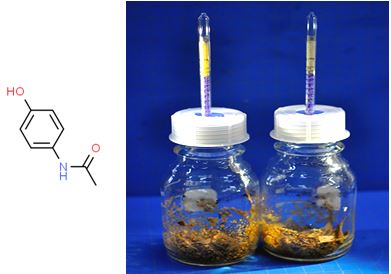A REVIEW ON COMPARATIVE STUDY BETWEEN THE PHYSICOCHEMICAL AND BIOLOGICAL PROCESSES FOR PARACETAMOL DEGRADATION
Keywords:
Biodegradation, Paracetamol, Biological and Physicochemical processAbstract
Paracetamol has emerged as one of the most frequent pharmaceuticals that found in natural waters and even in drinking water due to its high consumption and therefore deserves a review on the possible treatments for its remediation. The purpose of this review work is to give a compare between the physicochemical and biological processes for removing paracetamol from aquatic environment. Different types of processes are described in this review: from physicochemical process such as membrane filtration, chlorination, activated carbon, and advance oxidation, which applied for pracetamol degradation, to biological process such as microbial, membrane bioreactor, aerobic and anaerobic degradation, which are more recently focused on the degrading paracetamol. Physical processes, that eliminate the pollutant without degrade it, are not efficient enough to completely remove paracetamol from aquatic environment. While the chemical processes that are shown to be fast and efficient to remove paracetamol substance possess some drawbacks representing in high operational cost which make them not a desirable choice for treating wastewater. Biological process receives currently a significant attention for the removal of pollutants because it is found to be the most efficient technology which can be applied in degrading different pollutants. Regardless of its disadvantages, it has been found more efficient on degrading the paracetamol when compared to physicochemical processes. Furthermore, the combination between the biological and physicochemical processes overcomes all of the problems of processes that presented during treatment. Also, the combined processes improve the paracetamol degradation rate and reduce the treatment costs.
Peer Review History:
Received 27 January 2017; Revised 6 March; Accepted 27 April; Available online 15 May 2017
Academic Editor: Dr. Jennifer Audu-Peter , University of Jos, Nigeria, drambia44@gmail.com
, University of Jos, Nigeria, drambia44@gmail.com
Reviewer(s) detail:
Dr. Balguri, Sai Prachetan , U.S. FDA 10903 New Hampshire Avenue, SaiPrachetan.Balguri@fda.hhs.gov
, U.S. FDA 10903 New Hampshire Avenue, SaiPrachetan.Balguri@fda.hhs.gov
Dr. Sisir Nandi , GIPER, Kashipur, Uttarakhand, India, sisir.iicb@gmail.com
, GIPER, Kashipur, Uttarakhand, India, sisir.iicb@gmail.com
Downloads

Published
How to Cite
Issue
Section

This work is licensed under a Creative Commons Attribution-NonCommercial 4.0 International License.










 .
.